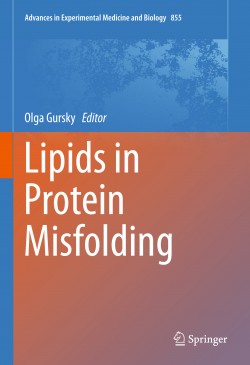Role of Lipids in Protein Misfolding Explored by BUSM’s Olga Gursky
 Proteins are one of the main building blocks of life and folding into the correct three-dimensional shape is an important part of their creation. If folded incorrectly, these proteins can aggregate and lead to disease. This is seen in many serious diseases including cystic fibrosis, Alzheimer’s, Parkinson’s and Creutzfeldt–Jakob disease, the human version of “mad cow” disease.
Proteins are one of the main building blocks of life and folding into the correct three-dimensional shape is an important part of their creation. If folded incorrectly, these proteins can aggregate and lead to disease. This is seen in many serious diseases including cystic fibrosis, Alzheimer’s, Parkinson’s and Creutzfeldt–Jakob disease, the human version of “mad cow” disease.
What causes proteins to misfold? Researchers around the world, including BUSM’s Olga Gursky, PhD, are trying to answer these questions. Gursky, a professor of Physiology and Biophysics, has written several peer-reviewed journal articles on protein folding, structure, and stability. Her latest book, Lipids in Protein Misfolding (Springer International Publishing, 2015), co-authored with 26 researchers, summarizes some of the latest research in this field and how it shapes our current understanding of protein misfolding.
The book focuses on the role of lipids, or fatty molecules, in the misfolding of a variety of proteins, ranging from the small amylin and amyloid-β proteins in Alzheimers disease to the large apolipoprotein B associated with atherosclerosis and heart disease. While many books have been published on misfolded proteins, the focus on lipids is unique and shines light on a relatively unexplored area of research. “These mechanisms are complex, controversial, and, hence, interesting,” writes Gursky. For example, lipids have been reported to both promote and prevent misfolding of water-soluble proteins, while misfolded proteins can disrupt lipid-containing structures (eg. cell membranes). Greater understanding of these bi-directional effects will lead to treatment and prevention of currently incurable diseases.
The book will be marketed worldwide, for more information visit the website.
Submitted by Krupa Patel, MD